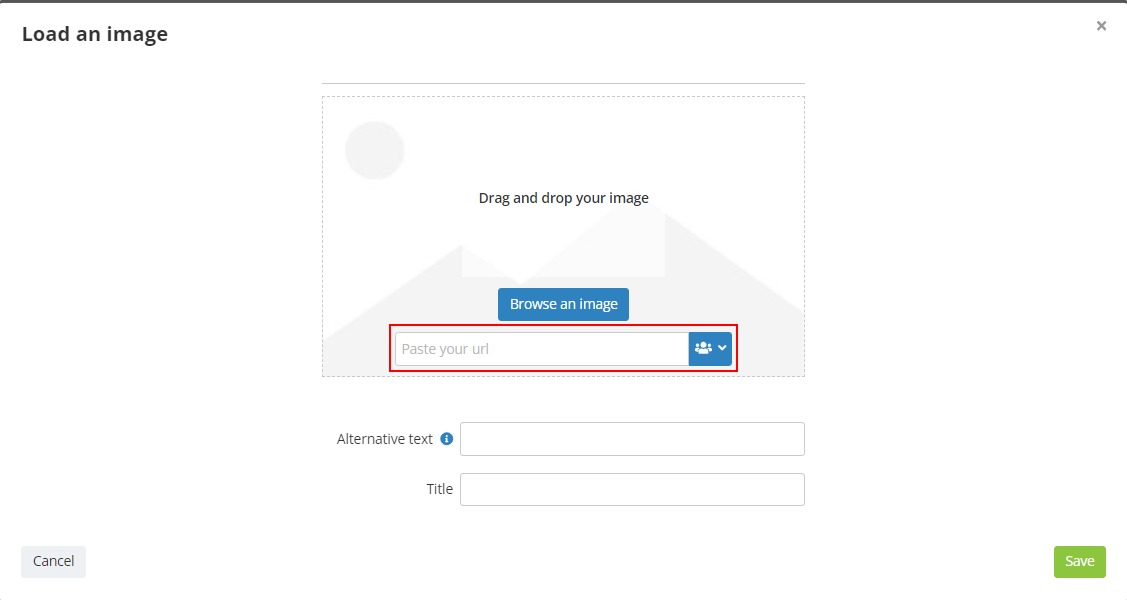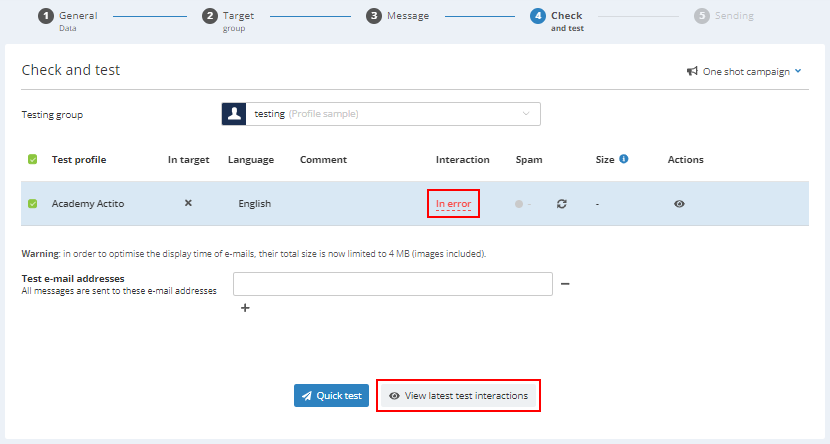Optimizing email loading time
The loading time of your e-mail is an import factor for the success of your marketing campaigns. It should not be overlooked. After all, this will be your recipients' first impression of the content of your e-mail.
After successfully convincing your contacts to open your e-mail thanks to a catchy subject, it would be a pity if they had to wait long seconds to see its message. Such a delay would without a doubt increase the frustration of your contacts and, for some of them, it might even increase their stress level.
A long loading time is especially detrimental to campaigns opened on a smartphone or a mobile device. Yet the mobile version is growing ever more paramount with today's habits.
Factors influencing an e-mail loading time
It is especially important to understand the impact of a 'heavy' e-mail campaign for your contacts.
The loading time of an e-mail is affected by several factors:
- on the one hand, by the internet connection speed of the contacted person: it will be slower with 4G on a mobile than at home with optical fiber. This factor is out of your hands. on the contrary, depending on your business, it might even be necessary to prioritize the mobile version, which is the least effective connection.
- on the other hand, the total size of the e-mail, which includes the total size of every image that will be downloaded for an optimal edition of the e-mail. The bigger is the global size (images included), the longer the loading time will be. This is even more important on mobile, the more the Data package of your contacts will be impacted.
It is therefore important to limit the maximum size of the HTML. As it is a primary factor, limiting the global image size of an e-mail campaign will be essential to ensure an acceptable loading time.
In order to optimize the loading time of your e-mail and the consequences it entails, Actito caps the maximum size of an e-mail.
Cap in effect in Actito
The cap in effect in Actito is a global e-mail size (image included) of 4MB.
In addition to the HTML size, the image size is based on three components:
-
Number of images: each image will need to be downloaded.
-
Size of each image: each single image cannot exceed 1,5 MB.
-
Display conditions of the content: every image will not appear in the e-mail received by every profile. They can differ according to the language version of your e-mail, or according to conditions that you set up. As such, the size calculation cannot be done before the generation of a customized e-mail.
As a comparison, it is usually advised that a web page should not weigh over a maximum of 2 MB in order to achieve an acceptable loading time (which means around 1 second)
Reducing the size of your e-mail?
Respecting the text/image ratio
It is highly advised to never design a marketing e-mail made of images only. In addition to the loading time problems previously explained, there are several reasons to prefer more editable text than images.
- Many e-mail providers and many browser do not load images by default. Your recipients will need to accept downloading them in order to obtain a correct view of the e-mail. If there is not any text in your e-mail, the page faced by your recipients will be totally white except for small red crosses replacing the images. In such a case, there is a high risk that they will not bother downloading the images and that they immediately ignore your message, or even mark it as SPAM!
Remember to specify an alternative text for the image. In this way, the message will not be lost even if the image cannot be displayed.
- If your marketing e-mail is only made of images there is a high risk for it to never reach the mailbox of your recipients. It is indeed likely that such an e-mail be marked as SPAM by e-mail providers, which can lead to detrimental consequences to your deliverability as a whole.
For these reasons, Actito suggests a 60% text and 40% images ratio. This good practice will allow you to optimize both your deliverability and the display of your e-mails. As a whole, the more elements are coded in HTML, the better the rendition on browsers will be.
Make sure not to use more HTML code than necessary. Some e-mail providers such as Gmail will clip your e-mail if the size of your HTML (images not included) exceeds 102 kB.
The size of your code (without images) is displayed when you send a test e-mail.
Focusing on your message
Keep in mind that whatever your marketing goal may be, it should not be boring for the readers. It is better to avoid too long and overloaded newsletters.
Actito puts many content modules at your disposal, but it is not needed to use them all at once.
By carrying out an analysis beforehand in order to exactly determine what you want to communicate will help you design a clear and concise message, which will have a bigger impact.
Conditioning your message allows you to vary its content according to each profile. You can therefore issue specific articles only to readers that might be interested in them.
Compress the images
Thanks to the 'responsive design of the Actito template editor, any image added to an e-mail will be automatically resized, all while keeping its proportions. The image width is indeed fixed (640 pixels at most for large banners), but not their height. This means that you can upload images longer than the placeholder, but not larger.
While it makes the creation of your message really easy, it can have consequences on the weight of your images. A 3000 pixels large image will be automatically resized, but the browser of your contacts will have to first download the base image, before in turn reducing it to the e-mail format. Yet, a larger image will without a doubt weigh more.
It is therefore useless to this 3000 pixels image, with a size of potentially several MB. Instead, a compressed image will be much lighter.
To optimize the image quality on HD screens, which display more details, we advise you to upload images twice as large as the placeholder.
For bigger images, doubling the image means it will be 1280 pixels large. It is therefore useless to upload images bigger than this format.
Hosting the images on an external server
If you nevertheless want images bigger than the limit, and therefore do not want to follow our suggestion on this matter, it remains possible.
To do so, you can host the image on another server than that of Actito, than refer to this image.
- To refer to the image via the editor, go to the 'Load an image' modal window. Instead of uploading your image, paste its url address to directly refer to it.

- If you code or import your e-mail in HTML, you can refer to the url of your image in absolute in the HTML.
Example
<img src="https://pbs.twimg.com/media/D4QSJxLXsAAsQg1.jpg" alt="This is an alt text" style="display: block; border: 0; width: 640px;" data-actito-img="" title="This is a title" width="640" border="0" class="imgResponsive">
Checking the weight of your e-mail
E-mail campaigns exceeding this limit will not be send, as soon as TEST sendings.
To check that your your e-mail does not go over the constraints that guarantee its optimization, the 'Check and test' step of the definition of your campaign will let you send test e-mails to your control group.
If the e-mail cannot be sent, the interaction will fall in error. Click on the 'In error' message in the 'Interaction' column or the 'View latest test interaction' button to obtain the details about this interaction.

An error message will confirm the reason of the error. If it is the size of the e-mail, it will be signaled with the following warning: In error (The size of the mail exceeds the limit of 4MB)

In such a case, it will be necessary to modify the content of your message, or the campaign will fall into error if you attempt to send it all the same.